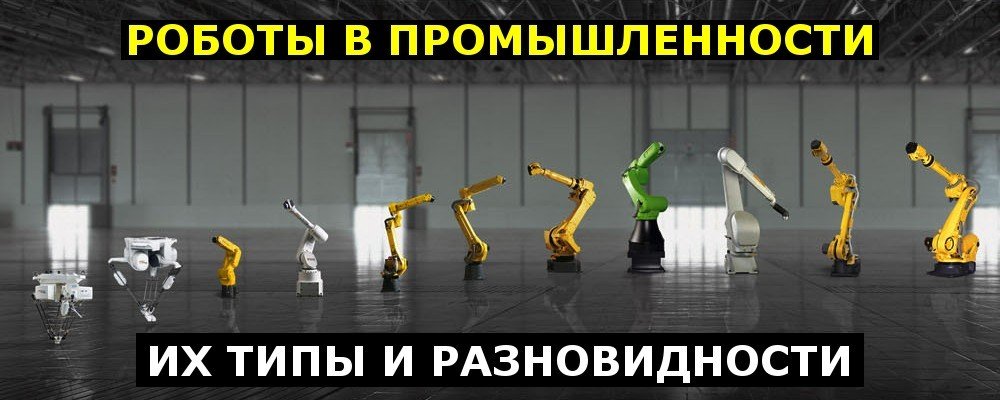
What is this?
This article is about the industrial application of robotics. The use of robots in industry began, historically, not so long ago – a little more than half a century ago, but now there is not much production that can be imagined without automatic lines, without steel manipulators and sharp glass pupils of robots – these iron guys have firmly entered the majority (19459005)
Despite such a vast, almost universal distribution of robots, only specialists fully understand the full range of their possibilities Tei. In this article, we will open the door to the world of industrial robotics for a wide range of readers: we will describe some varieties of industrial robots and the scope of their application. One can not embrace the immensity in one article, but if readers are interested, we will definitely continue.
So what kind of robots are they?
There are several classifications of industrial robots: the type of management, the degree of mobility, the scope and specificity of transactions.
By type of management:
Managed robots: require that their every movement is controlled by the operator. Due to the narrowness of the fields of application, few are common. Yes, and not really robots.
Automata and semi-autonomous robots: they act strictly according to a given program, often do not have sensors and are not able to correct their actions, can not do without the worker’s participation.
Autonomous: can perform a programmed cycle Actions without human intervention, according to the given algorithms and adjusting their actions as necessary. Such robots are able to completely block the field of activity on their conveyor belt, without attracting live workforce.
By function and scope:
Robots are divided by purpose and function, here are just some of them: industrial robots are universal, welding, engineering, cutting, assembly, assembly, packaging, storage, painting.
This is not a complete list: the number of various options is constantly growing Everything can not be listed in the framework of one article. One can only say with certainty that it is unlikely that there will be such a field of human activity where robots could not make man’s work more creative, taking the whole monotonous and dangerous part of the work for himself.
Other classification methods
Each encyclopedia, each reference book and each manufacturer has its own classification and typology of robots. Which is not surprising – often it is determined purely by the specific needs and the private approach of the one who makes it.
Will this prevent us from examining some of the samples and understanding – what do they know? Of course not. Let’s go.
Consider the samples
Among the industrial robots stands out the products of such famous companies as Kuka, Fanuc, Universal Robots, some of which we will consider below.
KUKA KR QUANTEC PA Arctic

]
KUKA KR QUANTEC PA – one of the best robot-paletoukladchikov in the market. KUKA KR QUANTEC PA Arctic – its modification, the robot functions at extremely low temperatures. It is designed to work mainly in freezers, at temperatures up to -30 ° C. Electronic and mechanical parts of the device do not need protection from frost, snow, frost, and also do not emit excessive heat. The range of the manipulator of the Arctic modification, like the standard KUKA KR QUANTEC PA, is 3195 mm, and the payload is up to 240 kg. The device is ideal for use in the food industry and in the extreme north. In addition to stacking of pallets, the robot can perform other manipulations, because the accuracy of its movements, or more accurately speaking, the stability of the positioning repetition, is 0.06 mm.
FANUC M-2000iA / 1200 – five-axis Lifting robot lifting up to 1200 kg and moving this load to a distance of up to 3.7 m – is ideal as a loader, as it works without human intervention, which practically nullifies the danger of injury. Operates at temperatures of 0 ° C to +45 ° C. The repeatability is 0.03 mm.
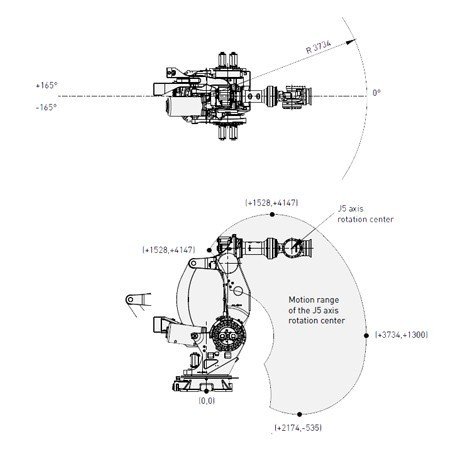
Extremely strong apparatus.
UR10 – the largest of the manipulators of Universal Robots and it’s a collaborative robot, in other words – It is designed to work with other equipment and help people work.
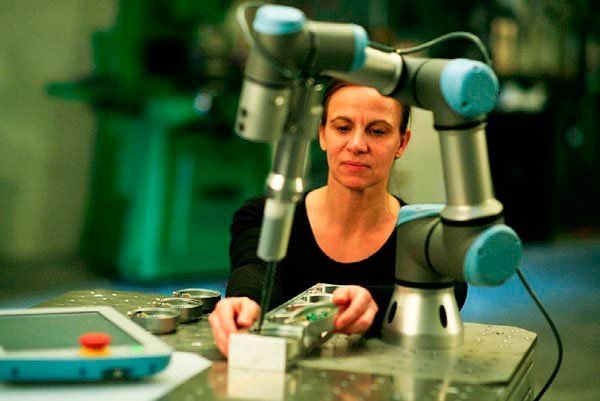
The model UR10 has a range of 1.3 m and raises the load to 10 kg. It can be used with agricultural, pharmaceutical, technological and many other equipment. Compactly placed in the workplace of a person to become his “third hand”, easy to program and quickly set up.
UR10 is able to screw, glue, weld and solder, produce and install. Also, Robots Universal Robots are used in the project Voodoo Manufacturing: Project Skywalker company Medium Corporation – a factory 3D- Printing, many operations on which exactly robotic manipulators perform. Such actions as replacement of printing platforms, collection and warehousing of finished products no longer require the constant attention of staff.
The universal robots are especially interesting, because they, due to their designation, are equipped with the most adaptive control systems.
Rethinkrobotics
These are robots such as Baxter and Sawyer produced by Rethinkrobotics.
Baxter is a multifunctional robot with two manipulators and feedback and self-learning systems.
Its 7-axis manipulators are capable of almost Everything that a person’s hand is capable of, including – have feedback and can control the efforts made. This, plus design features, make Baxter safe for living workers – its workplace does not need fencing, and in general – it takes up a bit of space, which saves space in the shop. A pair of baksters can successfully work together.

Baxter is also interesting because it does not require detailed detailed programming of each of his actions – “teach” it can be not only through an intuitive visual application, but also right on the job – repeating the displayed movements, he remembers them and applies them in the future.
Sawyer – “younger brother” Baxter is an amazingly compact and lightweight robotic manipulator, he Weighs only 19 kilograms and can be installed almost anywhere, without taking up a lot of space.
The accuracy of the action of Sawyer reaches 0.1 Mm, which allows to use it in hundreds of types of picking, assembly and other conveyor works.
Both robots are easily retrained to perform new functions even without the use of traditional programming and just as easily move from one workstation to another.
Hybrid production
Stratasys Infinite-Build 3D Demonstrator
Stratasys approach is very interesting, which created a new type of industrial device – a hybrid of a robot and a 3D printer.
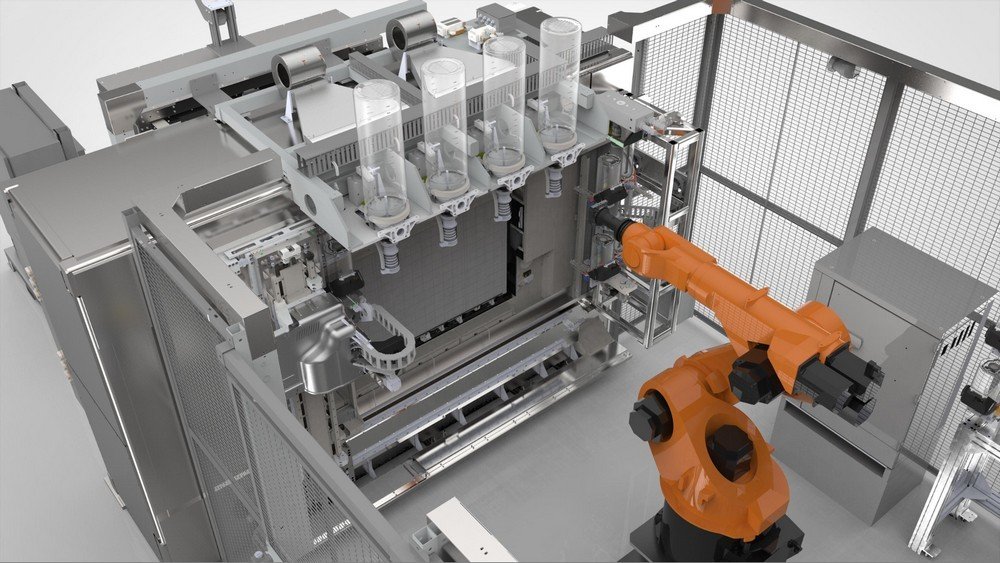
Of course, any 3D printer has robot characteristics, but here it is a completely traditional form of robotic manipulator, including the function of FDM printing. Stratasys Infinite-Build 3D Demonstrator is designed primarily for aviation and space production, in which its ability to print on vertical surfaces of unlimited area, in accordance with the concept of “infinite-build”, is so important. With the work on the project, monsters such as the aerospace giant Boeing and the Ford auto company are linked, which provided Stratasys with specifications on the required characteristics of the products received.
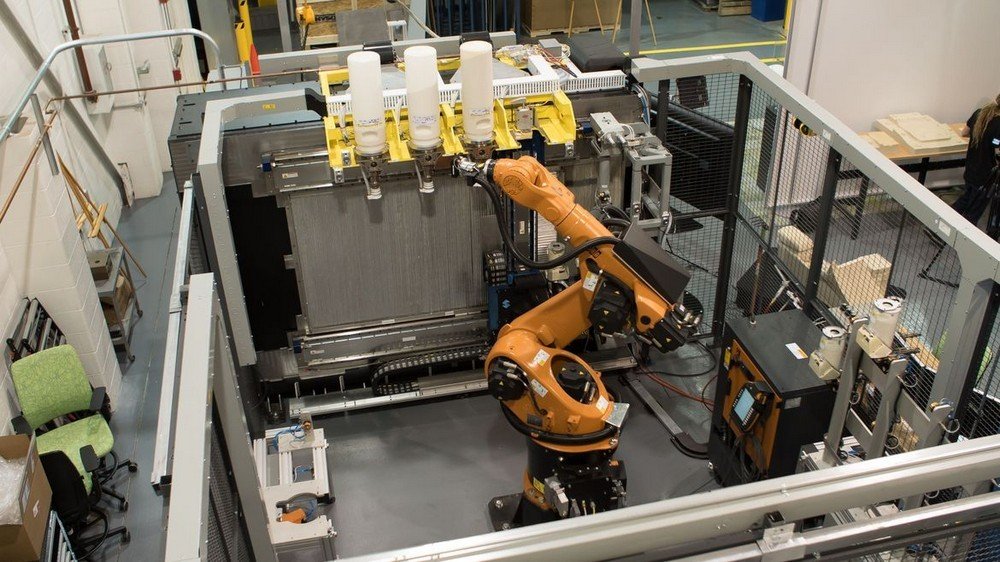
Eight-axle mechanism of the manipulator, an abundance of specially developed composite materials for printing, traditionally high quality of production – everything tells us that this device and its descendants have a great future.
3D Systems – Figure 4
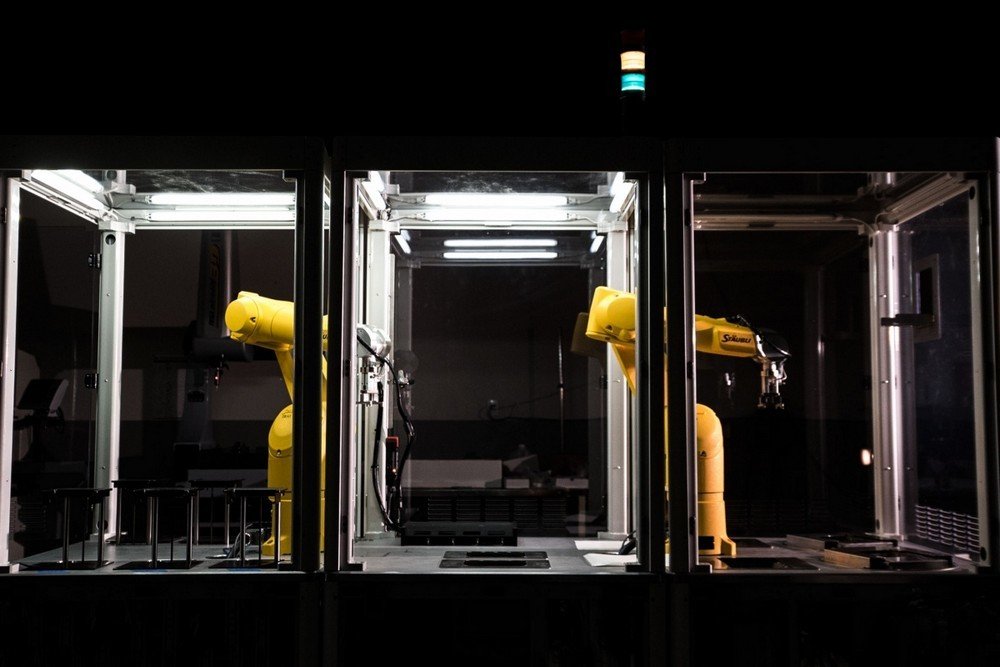
Figure 4 3D Systems – a modular robotic system for the automation of stereolithographic 3D printing, neither more nor less.
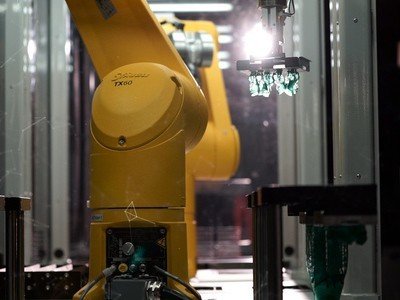
This is a whole automatic system that is able to produce new products every few minutes – unlike several hours on conventional SLS-printers.
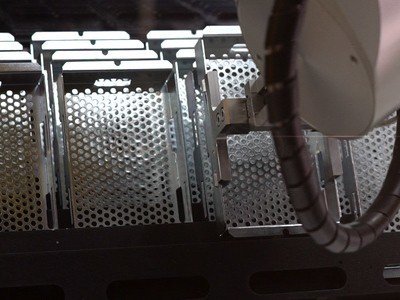
In addition, the cycle already includes such stages as washing, separation of supports and pre-backlighting, and not only the primary exposure. All this Figure 4 does by itself, without the intervention of the operator in the work process.
Due to the modularity, based on Figure 4, you can create large enough automatic lines using standard components.
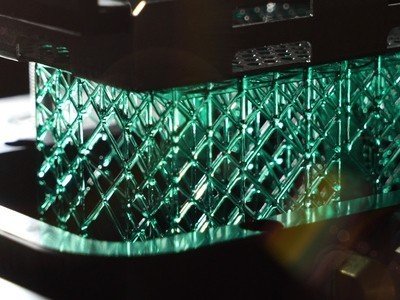
This complex was presented to the public this year at the International Dental Show in Cologne, as well as the new 3D printer ProJet CJP 260Plus – full-color 3D printer designed for anatomical modeling of medical products and rapid prototyping of any industrial designs
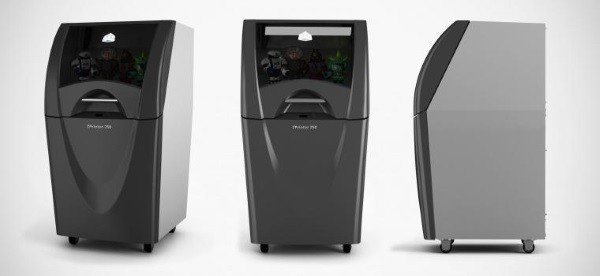
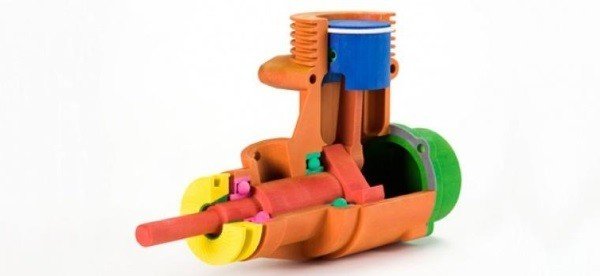
The printer is also robotic-equipped with an automatic loading, removal and processing of printed powder.
One can say with confidence that an integrated approach to 3D printing is part of the production culture of the future. He will give a radically new combination of speed, accuracy, convenience, and reduce product cost.
Carbon – Carbon SpeedCell

Carbon SpeedCell is a technological solution from Carbon, which includes a new 3D printer The M2, working on CLIP technology, and a Sterling lithographic device for Smart Part Washer prints.
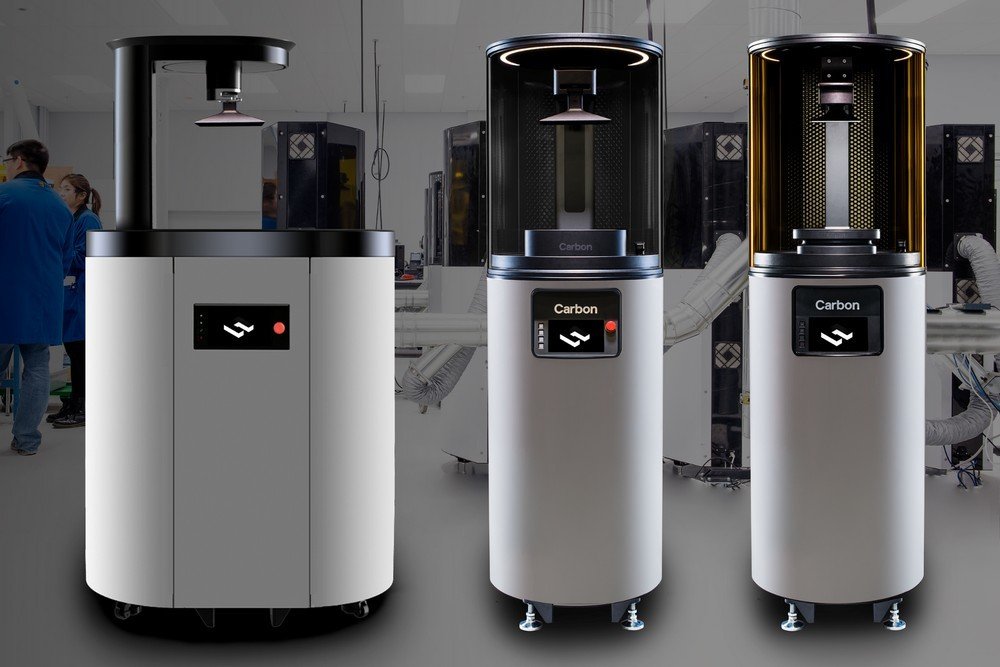
CLIP is a technology of laminated stereolithographic printing, providing a speed of 25 to 100 times faster than conventional SLS and a new level of surface quality.
CLIP (Continuous Liquid Interface Production) system allows obtaining previously impossible forms of products requiring minimal post-processing. The manufacturer has not yet provided the exact characteristics of the hardware complex, but the approach itself is already pleasing – it is an almost ready solution for any workshop that requires stereolithographic printing.
DMG MORI – LASERTEC 65 3D
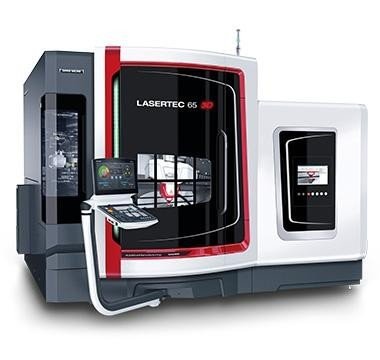
The device combines several different approaches to the machining of parts: it is a classical milling machine with software control – five-axis and very precise, and a laser cutting tool with the same degrees of freedom, and a metal-printing 3D printer with laser deposition technology. It is difficult to imagine an operation that this machine with a metal part could not produce. Hybrid approach: milling the workpiece, fusing the missing parts or printing from scratch and finishing – all operations can be performed with a detail in one approach, within the limits of one given program, without interrupting the technological cycle. The size of the machined and / or printed parts is up to 600 by 400 mm, and the weight can be up to 600 kg.
Such MFIs for metal work have already changed a lot in the production of piece and small-scale products, and in the near future such an approach can spread to mass production.
EOS – Additive Manufacturing

EOS has created manipulators that are capable of performing various operations where the capture and movement of a part is required. EOS developments in this area are based on observations of animal behavior, in particular – this manipulator was created following the example of the elephant’s trunk.
Such a robot manipulator can be used in a variety of industrial operations, such as: transportation and packaging, moving parts from one work area to another, for example, from a 3D printer to a post-processing camera, to exclude human participation in This is how it is arranged:
The company also sponsors and represents the project Roboy is a mobile humanoid robot that is able to perform any movements peculiar to a person and serve as an assistant to the product
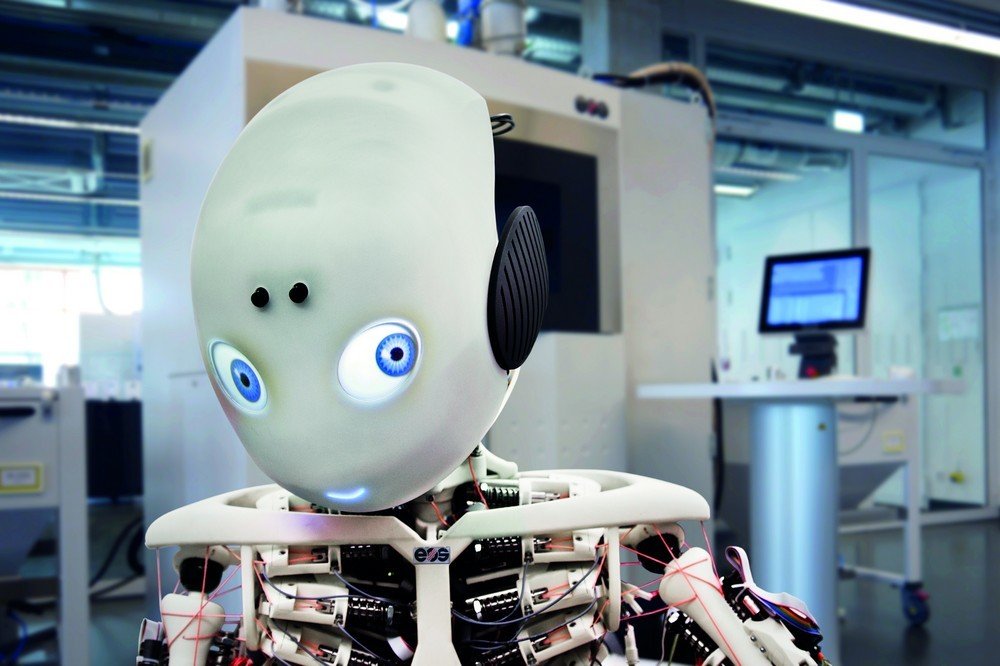
Concept Laser and Swisslog – M Line Factory
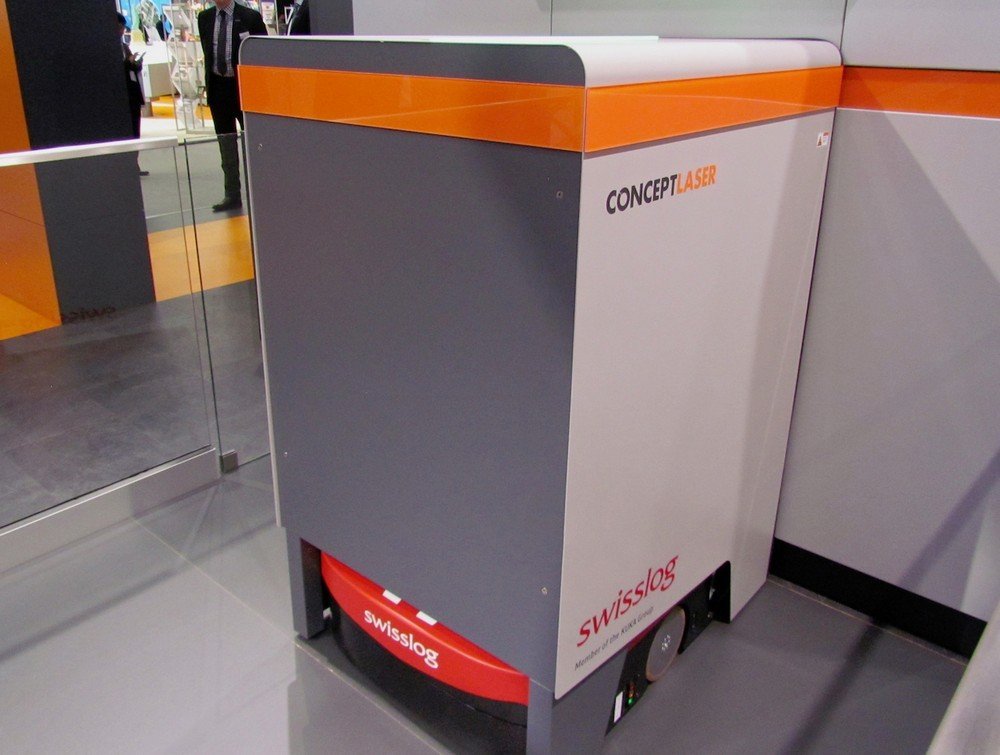
A well-known manufacturer of metal-printing 3D printers, Concept Laser has entered into an agreement with Swisslog, their common project is M Line Factory, a system for moving metallic 3D print parts between Concept Laser machines using Swisslog robots.
The companies continue improving the hardware complexes for 3D-printing with metal. The robotic components of these machines are able to carry out the part through the whole cycle – from loading the project into memory, until the finished product is ready for storage, without the need for operator intervention.
Additive Industries – The MetalFAB1
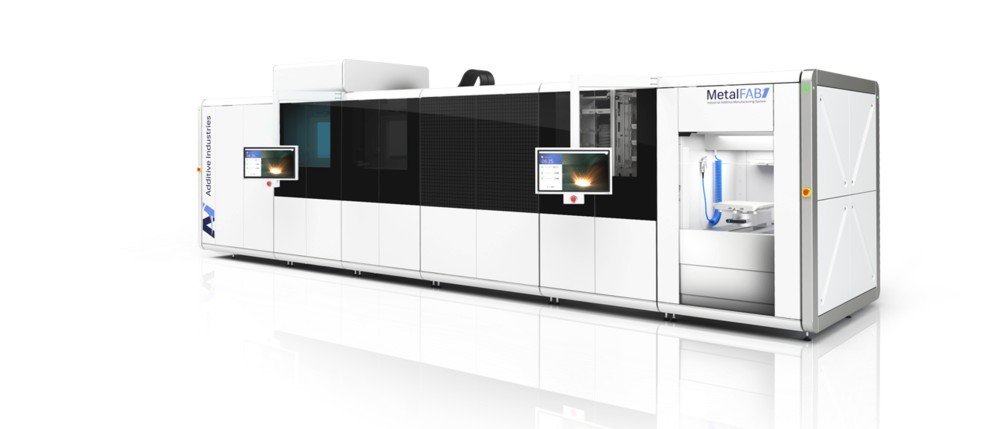
A unique installation – a single system for printing, transporting from the working chamber and storing finished parts. In fact – a ready-made shop of metal 3D printing in one package.
There are robots that can perform the functions of welding and milling machines with software control.
And also those that serve traditional CNC milling machines, increasing their productivity.
For example, this is what the above-mentioned Sawyer does:
Conclusion
Robots in modern industry everywhere. They are in any shop in any production area. And this is normal: robots save the money of employers, and workers are saved from harmful and monotonous-stupid work; Robots work around the clock and without interruption; Robots are much more accurate than living workers – they do not get tired, they do not “zamylivaetsya eye”, their sensors and positioning systems are able to maintain accuracy to hundredths of a millimeter.
While we see them not yet everywhere – many production processes are hidden from the ordinary user, And not very interesting, usually, but very soon it will be impossible not to notice that the vast majority of all material goods are produced by smart machines.
Want more interesting news from the world of 3D technologies?
Subscribe to the on in the social. Networks:












